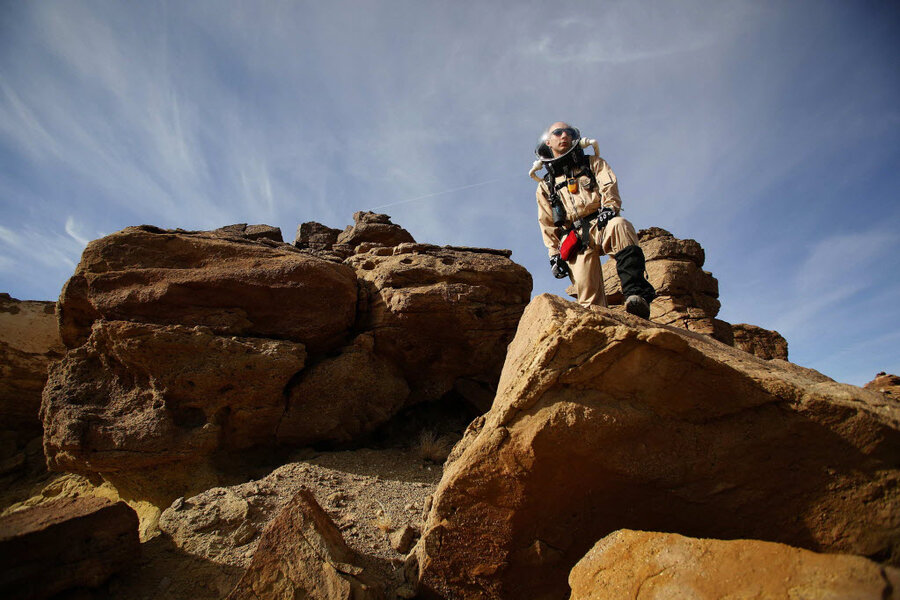Mars colony project launches plans for 2018 test mission
Loading...
A group that aims to land the first human settlers on Mars in 2025 has contracted with two well-known aerospace companies to study concepts for an unmanned orbiter and lander that would travel to Mars in 2018.
If all goes well, the effort by Mars One, a nonprofit organization based in the Netherlands, would represent the first privately funded mission to the red planet.
The lander would carry a pair of experiments designed to test technologies vital to the success of any settlement – an ability to extract water from the Martian soil, and light-weight, reliable, thin-film solar panels to provide energy. The orbiter would relay data from the lander to Earth and back, including live video feeds from the Martian surface.
“These missions are the first step in Mars One's overall plan of establishing a permanent human settlement on Mars,” said Bas Lansdorp, co-founder and chief executive officer of Mars One, at a briefing Tuesday in Washington.
Under a $256,000 contract, Lockheed Martin Corporation will develop concepts for the lander, derived from the one it built for NASA's successful Phoenix Mars mission, launched in 2007. Another contract, worth some $82,700, went to Britain's Surrey Satellites Technology, which designs and builds small communications satellites.
The companies aim to complete their studies by mid-2014. In the meantime, Mars One plans to issue calls early next year for proposals for the two major experiments, as well as for secondary experiments it plans to solicit from universities and high schools through design competitions.
The contracts do not commit either aerospace company to manufacturing equipment for the mission, although if Mars One is successful in raising the money it needs, the expectation is that the two firms would get the nod to do so. Mr. Lansdorp said Mars One has a ballpark figure in mind for a mission cost, but he was unwilling to reveal it.
As a rough point of comparison, however, NASA's Phoenix Lander mission, which operated for a little more than five months on Mars in 2008, cost $386 million. That mission didn't include an orbiter.
Phoenix is a very good match given the expected payload requirements, said Ed Sedivy, chief engineer for Lockheed Martin's civilian space projects, who served as spacecraft manager for the Phoenix Mars mission.
“It's a proven delivery system. The technology has been demonstrated. The team is in place. There are very few impediments that one would see to continuing” beyond the concept study to building the lander, he said.
Still, the companies must look at the type of rocket they'll need – or rockets if that is required to make sure the orbiter is in place before the lander arrives – and other aspects of the overall mission design.
Binding contracts to move forward come once the concept study is completed to everyone's satisfaction.
Mars One is turning to crowd funding through indiegoo.com as a way to engage people interested in supporting the mission. The group's goal is to raise $400,000 over the next 47 days through such donations.
But the bulk of the money for the mission would come from corporate partners. Lansdorp said. Mars One is in “very serious discussion” with several major companies interested in becoming partners in the university-experiment competition.
Other companies appear to be interested in the mission for “very exciting, very exclusive PR events,” he said. “We believe we are in very good shape” to make the mission happen.
Mars One was founded in 2011. In April it solicited applications for crew members. At the end of August, when the window to apply closed, the group had received more than 200,000 applications. Mars One plans to announce the applicants who survived the initial cut by the end of this year.
The group envisions sending four people initially, with four fresh faces arriving every two years. As launch capabilities improve, the hope is to send larger crews, Lansdorp said.







